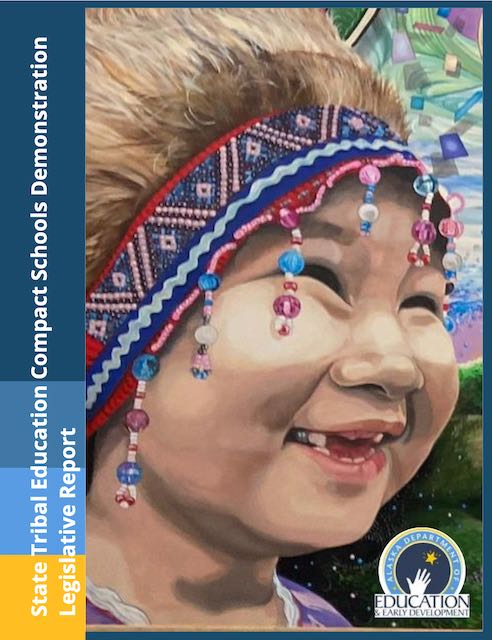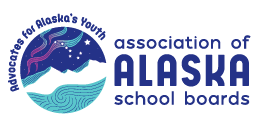State-Tribal Compact Pilot Program Targets Alaska Native Student Outcomes

Conditions for Learning Team
The State of Alaska has established a demonstration project to support tribes within Alaska to have more control over education in their communities, a move aimed at improving long-term educational outcomes for Alaska Native students.
The initiative, outlined in the State-Tribal Education Compact Schools Demonstration Legislative Report, proposes creating Tribally Compacted Public Schools (TCPS) through partnerships between the state and tribal organizations. The 72-page report, developed by the Department of Education and Early Development (DEED) and participating tribes, details plans to establish governance structures, funding mechanisms, and operational structures that support tribal sovereignty over education and offers tribes a chance to establish schools that upholds Alaska Native values, culture, language, and pedagogy into the education system.
TCPS will be considered public schools within Alaska. Under the compact agreements, each participating tribe will be recognized as a local educational agency (LEA) and will function as a school district under Title 14 of Alaska law. This classification allows TCPS to operate within the framework of the state’s public education system while maintaining local governance, educational sovereignty, and culture and place-based learning integration.
The demonstration project is designed to support tribal and educational sovereignty and to allow for tribes to define and reach their own educational goals for their students, families, and communities. Compact agreements between the state and selected tribal partners, authorized by Senate Bill 34 (SB 34), allows up to five demonstration tribally-run schools to develop.
The State Tribal Education Compact Demonstration Project Included:
- Central Council of the Tlingit & Haida Indian Tribes of Alaska (Juneau Area)
- Inupiat Community of the Arctic Slope (North Slope Region)
- Ketchikan Indian Community (Ketchikan Region)
- King Island Native Community and the Village of Solomon (Bering Strait Region)
- Knik Tribe (Mat-Su Region)
The STEC Demonstration Project participants have compiled their recommendations and findings here.
This report was developed during a 10-month negotiation period with tribal leaders and an extended public input session. During that time, the STEC participants considered governance, funding, teachers and school personnel and evaluation.
The TCPS framework underscores that the schools will be public schools open to all students. The programs will be student-centered and prepare for future ancestors or future generations.
The report also shows how each tribe will approach their education demonstration project uniquely.
What School Board Members Should Know About Tribal Compacting
In a recent meeting between the Association of Alaska School Boards and representatives from four of the STEC partnerships, this information was provided:
- Compacting is one way that tribes can work on improving our educational system and educational outcomes.
- Many tribes are eager to be a part of education efforts.
- Tribal consultation is required in schools that have Alaska Native students and is an opportunity to work to improve education systems and outcomes. Many districts may not be meeting these requirements and may not be using best practices. This may go beyond using a letter format to sign off on collaboration.
- Tribes may choose to collaborate with school districts through existing structures, charter schools, or independent public schools through compacts.
- The Indigenous lens is a whole child and whole family lens and tribes can support existing schools to do this.
- Many tribes have education experts who can be included as trainers, educator pedagogy, and are trained in both western and cultural frameworks. Invite us in as experts.
- Create opportunities and be systematic in how you work with your local tribes. Embed these processes so they last through leadership changes. Help bring those conversations forward and look at data together.
- Learn about best practices for working with tribes. Reach out to lgrassgreen@aasb.org.
Or look at the resources at the National Indian Education Association.
- Review these slides on tribal consultation, created by Mischa Jackson (Central Council of Tlingit and Haida Indian Tribes of Alaska), Darlene Trigg (Kawerak), and Tiffany Jackson (AASB).
Some other key considerations on State Tribal Education Compacts
The report outlines key steps to develop a transformative and successful education model for Alaska Native Students and recommends:
- Statutory changes to support the TCPS pilot program. These adjustments would establish TCPS as legal educational entities under Alaska law, allowing them to operate with both state and federal support while maintaining tribal governance structures.
- A seat for a STEC representative on the State Board of Education
- Teacher certification through tribal training processes and verification through the Department of Education and Early Development
- Using a whole-child and intergenerational approach to learning
- Establishing accountability and evaluation structures that have tribal and state accountability structures.
The report also includes an example of a negotiated government-to-government agreement.
Tribal Compact and Tribal Consultation
Tribal Compacting is one path to long-term educational success for Alaska Native students, combining state resources with tribal autonomy to create schools that reflect and uphold Alaska Native values and heritage. As the report notes, the TCPS initiative holds the potential to make culturally integrated education a reality, promoting academic success and community well-being across the state.
For more information on the State-Tribal Education Compact Schools, visit the Department of Education and Early Development website.
Many school districts, regardless of whether they have tribal education compact goals, acknowledge the need to enhance their consultation protocols and relationships with local tribes. Explore strategies for strengthening these vital partnerships at the upcoming AASB Spring Boardsmanship Academy.
